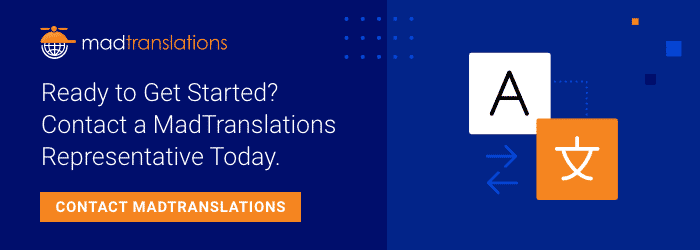As a product manager for your company’s software product, you already have a lengthy list of tasks to tackle before a product release. If you are selling your product internationally, that list is going to grow a lot!
Localizing your product does take effort, but the return on investment is typically worth it—but only if the localization process meshes well with your current development practices and is efficient. To be sure you are ready to localize your product, here are some things you must consider:
- Have a firm grasp of the scope of your localization efforts.
Do you know where you want to sell your product and which languages are required? This may sound simple, but language choice can be a complex and tricky task. For example, if you are selling your product in Ukraine, do you translate the interface only to Ukrainian or Russian too? What if you know you have users in Quebec, Canada? You know you need to translate to Canadian French, but what about potential users in France? You will be able to justify and provide a business case for each market and know the related costs for localizing for each market so that you can accurately measure localization ROI.
- Is your dev team on board with the localization effort?
Having buy-in will reduce friction and lead to a better overall process and product. Oftentimes, localization is viewed as trivial by dev teams. You must make sure they can make it a priority and commit the necessary resources.
- Has your development team properly internationalized the product?
For example can the strings (labels, menus, error messages, etc.) be easily accessed outside the source (functional code) itself? Does the application use resource files to store this content, and can those resource files be easily passed to a localization vendor?
- Is there a defined localization kit or process for bundling strings?
A localization kit is a standard package your dev team will assemble. This approach is more common in a waterfall production cycle.
- Is your process able to support continuous localization?
More agile processes and continuous localization will have a standardized workflow that replaces the passing of localization kits or batches
- Have the internal workflows and connections been built and tested?
To support continuous localization, you will need to define production paths. You must define what and where your dev team will store string batches. Your localization vendor must have the ability to access this storage point and fetch strings once they are ready. How will your team be alerted when newly translated strings arrive?
- Has your product passed a pseudo-translation test?
Pseudo-translation is a well-established method for carrying out a test localization of your product without having to incur translation costs. It is an excellent method for testing your software product to accept translated strings that may have expanded in length and use different writing systems. This allows your dev team to check for string fit issues or other display bugs that may arise from flaws in the code.
In addition, pseudo-translation can help you test the full production cycle from passing added content to your localization partner to receiving back translations and building a pseudo-localized product that you can test.
- How will you handle product support for multiple languages?
If you are making the effort to localize your product, ensure that users in international markets have the same or better customer experience than your domestic customers. Support for these markets does not have to be provided in the same manner, but there must be clear and robust support, nonetheless. You may opt to offer more extensive DIY support by translating more content or offering more training or how-to videos. You can even localize your support bot to offer better real-time support and knowledge base search.
- Are there special regulatory requirements for your product in target markets?
Make sure you have researched how your product can be sold and marketed abroad. You may have to make changes to EULAs, marketing claims, support SLAs, or gain special product certifications. There may also be specific language, accessibility, privacy, and security requirements.
- Be sure to include product documentation and marketing collateral in your localization effort.
Try to be holistic in your localization effort. Include as much content as possible in the beginning. It is enticing to do large localization efforts in a piece-meal fashion, but that generally results in overall more expensive and less efficient localization projects. You also obscure the actual cost of localizing correctly and executing well, which will only hurt your company’s long-term goals. So, include ALL the content you need beyond the core product itself. Include as much user documentation as possible that makes sense for your target customers and be sure not to skimp on the marketing content.
- Make sure you have firm control of the critical terminology (think “keywords”) within the product (function names) and about your product (marketing descriptors).
Be sure you have already defined the critical terms that appear in your product along with the keywords used to describe it. This is usually happening as part of your marketing SEO efforts. You can leverage that effort to benefit localization and provide those lists to your localization partner so that they can properly translate the critical terms within the product and adapt/localize the keywords that will drive online search results in international markets.
- Do you have a localization vendor?
Choosing the right localization vendor will be one of the most important actions you take for preparing your product to sell internationally. Think well beyond price and be sure to assess candidates’ overall abilities. Go out for a competitive bid, but do not choose the lowest priced provider by default. Ask for client references and take the time to speak to the references to understand the candidates’ strength and weakness when it comes to consistency and reliability of the service they provide.
- Do you have a test script that the localization partner or testers can follow?
Having a test script is not only a sound practice for your original products testing, but it can also be the basis for your localization QA as well. This is often a step skipped by many software firms, but it is an investment that continues providing returns over many years.
- How will you manage localized screenshots for training and documentation?
This is an often-overlooked detail. Screen shots are still a part of product training and documentation. A lot of time and effort goes into creating them in the source language/English. Be sure to put a process in place that enables an efficient re-taking of those shots across multiple languages. Scripts that automate the process are ideal, but you can also use this as an opportunity to create a QA test script and use the capture of screens as part of your localization QA process.
- Do you have in-country partners you can include in the user acceptance/QA process?
If you have in-country partners (distributors or sales reps) assisting abroad, be sure to enlist their assistance in the localization effort. Often, they are subject matter experts who can provide critical feedback about terminology and accuracy of the translation. Enlisting their help as part of the formal process will also help in trusting and accepting the content provided by your localization partner.
- How will you manage updates to all the product content?
If you can achieve a continuous localization workflow for your product interface, why not leverage that for other types of content. Work with your marketing and technical communications teams to create similar turnkey workflows that allow you to avoid translation backlogs of content and strive to remain “forever release ready”.
You may have noticed that most of these steps are preparatory in nature. In other words, you can and should undertake most of them well before you intend to tackle your first localization effort. Just remember, you aren’t just localizing a product, you will be creating ten, twenty or thirty new products given the number of languages and markets you want to sell in.If you need help planning your localization efforts, call on MadTranslations for no-obligation initial assessment.










